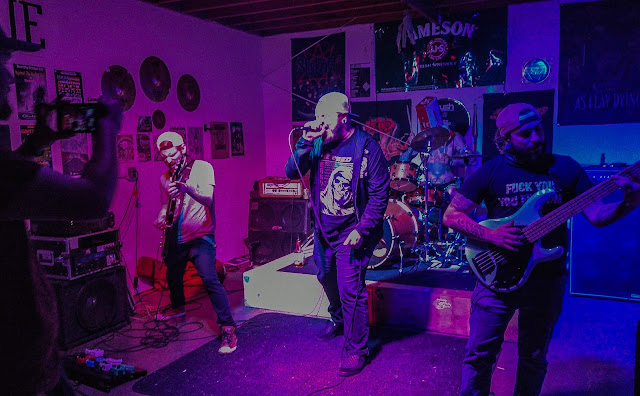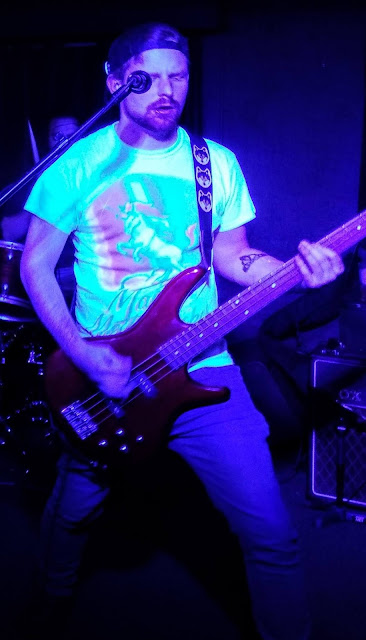Many of Addarios pictures are enveloped with beautiful and bright colors, like the pashminas of the middle eastern women and vivid blue skies against sandy plains and mountains. One thing I found most compelling about this picture, however, was the level of creativity it must've took to get a good shot in this setting. The lighting is so dim, with only the small window of sunlight beaming through. The way she composed this shot; the sunlight highlights their faces and the sheet/netting, waving ever so gently in the breeze. I think the angle she chose was important because it shows the environment. She could have gotten much closer to capture more emotion out of their faces, but by stepping back a bit she's able to capture this little 'bubble' of life, light, and hope that's surrounded by a vast sea of darkness, which ultimately plays into one of her overall messages of exposing some of the darkest truths of the world around us. She seeks to show the rest of the world the acts of terror that many are facing in hostile countries today.
Amidst her photojournalism career, Addario goes through horrific events in her travels through Africa, including photographing the Taliban in the middle east. On top of general war zone happenings and fear, she endures two kid kidnappings; first in Iraq by Iraqui Insurgents, the second by pro-Gaddafi forces in Libya. She doesn’t give up, and refuses to let what she sees stop or haunt her, “the sadness and injustice I encountered as a journalist could either sink me into a depression or open the door to a new vision of my own life. I chose the latter”, Addario writes.
Despite these happenings, however, the thing that lingers in my mind is the fact that in 2004, she provided images of wounded American soldiers to Life magazine, and they refused to publish them, because they were “too real”. In 2007, the New York Times Magazine also refused to publish her photo of an Afghan boy wounded by NATO bombs.
Addario does what she does to expose what’s really happening in the world; the famish, war, disease, and mistreatment of women. When her work gets rejected by what are supposed to be some of the most reliable news sources, she’s absolutely livid! Of course who could blame her, I would be too. This really puts her work into a deep perspective - she is ‘screaming’ for someone to listen, to see what’s actually going on beyond our shore and even the people who sent her there aren’t listening! This shows us even more so the importance of what someone like her does. If it wasn’t for people like Addario stepping up in the world to show what is really happening, then we would all be living in a false reality, especially those here in the United States. It’s equally as imperative that she puts things like this in her book, to bring awareness to what she and other photojournalists are dealing with in the workplace, both [the possibilities of] kidnappings and denial of your work because it’s “too real”.
In her relentless search for truth, Addario doesn’t let her fear get in the way. Her passion, drive, and humility is what shapes her authenticity in photojournalism. She is always kind, courteous, and respectful to her subjects, and this is demonstrated multiple times throughout the book. Addario's resilience, willingness to learn and empathy are what ultimately keep her afloat and shape her style. “...I wasn’t scared. I believed that if my intentions were for a good cause, nothing bad would happen to me.”, (Ch.2 pg.41). She said this prior to her ever stepping foot in a hostile country, and never lost that mindset.
The trauma that Addario withstands is enough to make many ‘sick’, but not Lynsey; "there is a somewhat accurate cliche of the ever-haunted war correspondent who can't escape the darkness of what he has seen... I didn't want to be that person."
She never gives up, and even after she has gone through so much, she doesn’t lose that driving part of her. On her way to Israel from Gaza at the airport, she is forced to go through three security x-ray scanners, and then is stripped searched whilst pregnant, even after she expresses her concern about radiation and her unborn child. The Isrealian soldiers up above who were watching, were laughing as she passes through the cold glass box through multiple times. Addario responds internally to this situation with only growth and knowledge; “....I could suddenly understand, in a new, profound, and enraging way, how most people in the world lived. I had been seeing that reality for years. But somehow, I had to admit, my pregnancy and the vulnerabilities of motherhood had offered me yet another window on humanity, yet another channel of understanding.”, (Ch.13 pg.264). It’s this continued adaptability to all things in her environment and resilience that launches Addario forward into her life changing career of war photojournalism.
When I think about Lynsey, I think of a fierce woman who has the utmost respect for and love of life. Her ability to connect with her subjects gets them to open up, thus securing a story that many other journalists would not be able to get. “Over the last several years I had learned how to observe people by establishing that initial rapport through eye contact” (Ch2. pg.49)”. This is something that continues to ring through my mind, and something that I will be taking with me in my photojournalism career.
I believe in what she does, and the list of things I learned from her is vast. Her dedication and viewpoint are unique to the world, and her never give up attitude is inspiring.
This story is something that everyone should read. With messages of determination, passion, courage, resilience, empathy, and humility, there is a lesson to be learned here for anyone. I highly recommend this book to any reader. Her courage is endless in her desire to spread knowledge and truth through her photographs. I highly commend and admire Addario’s work; this hero wears a camera instead of a cape.












